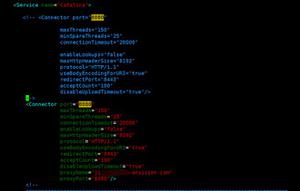使用pandas比较两列
以此为起点:
a = [['10', '1.2', '4.2'], ['15', '70', '0.03'], ['8', '5', '0']]df = pd.DataFrame(a, columns=['one', 'two', 'three'])
Out[8]:
one two three
0 10 1.2 4.2
1 15 70 0.03
2 8 5 0
我想if在熊猫中使用类似声明的内容。
if df['one'] >= df['two'] and df['one'] <= df['three']: df['que'] = df['one']
基本上,通过if语句检查每一行,然后创建新列。
文档说要使用,.all但没有示例…
回答:
您可以使用np.where。如果cond是布尔数组,A并且B是数组,则
C = np.where(cond, A, B)将C定义为等于A哪里cond为True,B哪里cond为False。
import numpy as npimport pandas as pd
a = [['10', '1.2', '4.2'], ['15', '70', '0.03'], ['8', '5', '0']]
df = pd.DataFrame(a, columns=['one', 'two', 'three'])
df['que'] = np.where((df['one'] >= df['two']) & (df['one'] <= df['three'])
, df['one'], np.nan)
产量
one two three que0 10 1.2 4.2 10
1 15 70 0.03 NaN
2 8 5 0 NaN
如果您有多个条件,则可以使用np.select代替。例如,如果你想df['que']等于df['two']时df['one']
< df['two'],则
conditions = [ (df['one'] >= df['two']) & (df['one'] <= df['three']),
df['one'] < df['two']]
choices = [df['one'], df['two']]
df['que'] = np.select(conditions, choices, default=np.nan)
产量
one two three que0 10 1.2 4.2 10
1 15 70 0.03 70
2 8 5 0 NaN
如果我们可以假设df['one'] >= df['two']whendf['one'] < df['two']为False,那么条件和选择可以简化为
conditions = [ df['one'] < df['two'],
df['one'] <= df['three']]
choices = [df['two'], df['one']]
(如果包含df['one']或df['two']包含NaN,则该假设可能不正确。)
注意
a = [['10', '1.2', '4.2'], ['15', '70', '0.03'], ['8', '5', '0']]df = pd.DataFrame(a, columns=['one', 'two', 'three'])
用字符串值定义一个DataFrame。由于它们看起来是数字,因此最好将这些字符串转换为浮点数:
df2 = df.astype(float)但是,这会改变结果,因为字符串会逐个字符地进行比较,而浮点数会进行数字比较。
In [61]: '10' <= '4.2'Out[61]: True
In [62]: 10 <= 4.2
Out[62]: False
以上是 使用pandas比较两列 的全部内容, 来源链接: utcz.com/qa/435141.html





